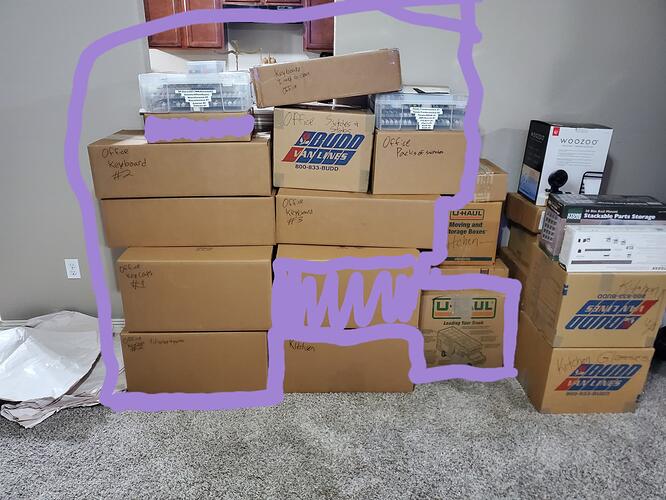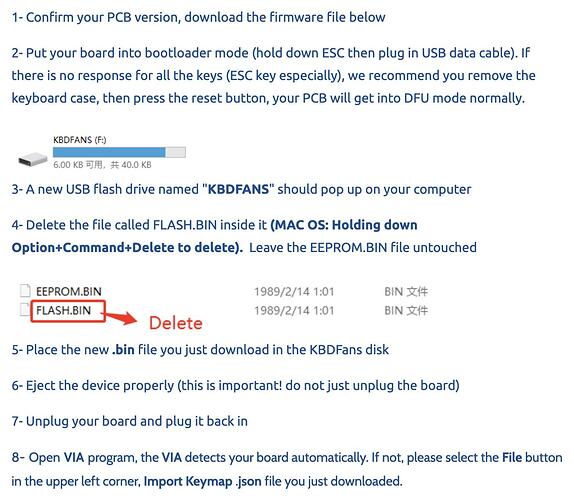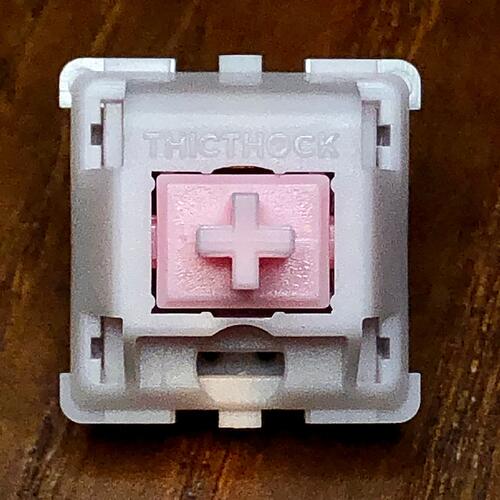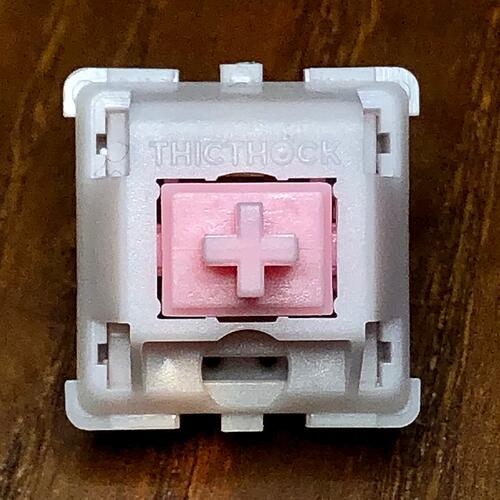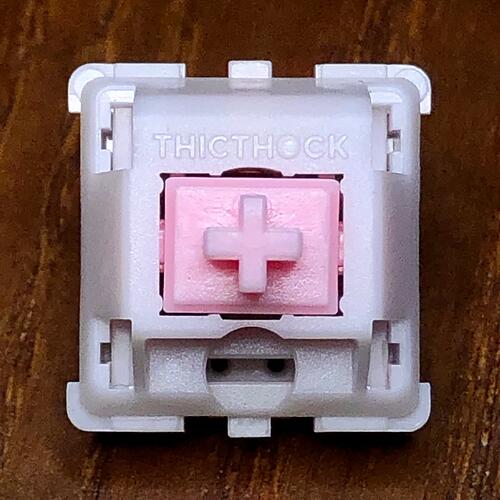Cherry Clears/Ergo clears, penguin, Zealios v1 redux(i think)
If you have a bit of key binding on a stab during off-center keypresses and not in any mood to try and fix it, no worries – it seems to smooth out on its own. I guess what I witnessed is a switch breaking in just enough that the key return is now totally normal and actually sounds and feels a bit better than the others. Weird, but cool.
I learned that i hate moving and that i probably should chill with my keyboard purchases >.> Everything inside the purple is just my keyboard stuff. 3 28x18x12 boxes of keyboards, 2 24x24x12 boxes of keycaps and stuff for displaying my boards, one uhaul box of deskmats and then just so many switches
I am in the process of repairing a 40% PCB, and over the last few days, have learned quite a bit about SMD Diodes, and by extension, the sizing and specs of other keyboard PCB components. Having a blast!! 
(Edit: info in this one isn’t quite correct; subsequent post below is more accurate.)
Tribosys and Krytox are not competing brands, but both sub-brands of the Miller-Stephenson chemical company. I somehow missed this until now, while updating the glossary on my website.
I’m not totally clear on it, but I think it breaks down something like this:
Miller Stephenson
-
Chemours
-
Krytox
- GPL 100 series oils
- GPL 200 series greases
- XHT series greases
-
Teflon
-
-
TriboSys
- 3000 series greases (specifically marketed for keyboards)
- KSL “keyboard spray lube” (contains aerosolized Krytox 205g0)
- MS series industrial aerosol lubricants
So - while none of these brands are exclusively marketed directly towards keyboard manufacturers and users, TriboSys is the only Miller Stephenson brand I’m aware of that includes products that bill themselves as specifically for keyboards.
The entry for 205g0 does mention its popularity with keyboard users and even treats it as the primary function for that particular version of 205 - but generally speaking, 200 series greases including 205 are used all over the place, including the industrial printing equipment I operate at work. “GPL” does stand for “general purpose lubricant”, after all.
Ye 204g0 is the same as 3204
IIRC 3204 is itself a NGLI grade 0 grease, but is a hair more viscous than 205g0 - though it was specifically designed to perform as an equivalent to 205g0 in keeb applications.
Do u see the same three numbers?
3203 - 203g0
3204 - 204g0
Ah, right - 4, not 5 - derp. So here’s what I’ve gleaned from a bunch of posts trying to suss-out why there are even multiple names for this stuff;
Apparently both Dupont and Miller-Stephenson have produced Krytox branded stuff. The relationship between all the brands is kind of confusing, partially because that relationship has changed over time. Chemours (which owns Krytox) used to be a direct subsidiary of Dupont, but now Chemours is its own legally separate company.
So… updated, more simple chart, lol:
Miller-Stephenson as MFR
-
Tribosys (a Miller-Stephenson brand)
-
3000 series greases (Krytox 203g0 & 204g0 equivalents but not associated with that brand, marketed exclusively as a keyboard-related lube)
-
KSL series keyboard spray (explicitly contains Krytox brand 205g0)
-
Other medical & industrial stuff not related to keebs
-
-
Krytox (a Chemours brand, not owned by Miller-Stephonson, no longer owned by Dupont)
-
GPL series (used everywhere including but not even vaguely limited to keebs)
-
Teflon, Freon, and other stuff not related to keebs
-
From what I can tell, Dupont is no longer part of this picture at all. It’s unclear if they produced Chemours products in their own facilities at some point, or if they’d always contracted Miller-Stephenson to do it. An info page on the MS website mentions that as Chemours transitions into its own company that they would “continue” to manufacture Krytox, etc.
I have read but have not yet confirmed that GPL made by Miller-Stephenson and Dupont aren’t quite the same quality with people generally preferring MS, but I haven’t found anything other than forum yammerings about that. So, it’s quite possible that Miller-Stephenson has always been the only manufacturer, and the other stuff is just brand shenanigans.
y both exist tho
As for why there are even separate brands for TriboSys and Krytox, based on what I’ve read so far, I think it goes something like this:
-
Krytox is a brand under Chemours, formerly itself under Dupont; Miller-Stephenson produces for them, but does not own any of these brands
-
TriboSys is a brand directly under and owned by Miller-Stephenson, making it legally distinct from the above brands; this would explain the occasional legal notice I’ve seen about it being “strictly forbidden” to sell Tribosys 3204 as Krytox GPL 204g0 despite their equivalence
-
I’ve read conflicting accounts about whether it’s just the properties that are essentially the same, or if the two series of greases are 1:1 equivalent, different only in name / packaging / licensing - still curious about that point
-
Krytox 200 series greases have been around for a while, but I’ve read that 3204 and 3203 were born of a desire to have something a little less viscous than 205 specifically. Speculation: perhaps Miller-Stephenson got permission from Dupont / Chemours to use the same 200-series formulation under their own brand at these thinner brackets if they only marketed it to this small hobby niche. Apparently later on, other industries also needed lighter brackets of 200-series, so the “204g0 equivalent” was simply produced as a Krytox branded product from there, already fitting neatly into a pair of brackets next to 205. This could explain why both exist side-by-side as equivalents being made by the same factory, but the brand owned by the manufacturer is strictly sold as a for-keyboards hobby grease. This could also explain why there’s no Tribosys 3205, and also why some vendors will have 204g0 and 203g0 instead of or in addition to 3204 and 3203.
-
Even if 203 and 204 did already exist when 3000 series came out, it would still make sense for Miller-Stephenson to license the right to sell it directly to a small industry. That makes it a little less clear why there’s no 3205, unless Chemours recognized it was already popular in the keyboard community under its own brand.
I don’t know, but assume that 3203/3204 is mixed properly in the factory just like 205g0 whilst all other Krytox comes in g2 state and is mixed with GPL to get the different grades.
Um, your ‘mix’ may differ from their ‘mix’. I frankly wouldn’t mind buying 3204.5g0.
I swapped the PC plate for the Fr4 plate in the Ginkgo65 today and learned that I did not like the Fr4 plate  now to swap it back tomorrow…
now to swap it back tomorrow…
I also started putting on the DSA keycaps and while I like the look of them, I don’t like the sound or feel of them…  this I’m a little disappointed by as I had high hopes. But I like XDA and XVX much better. No more keycap profile experiments…! Well, maybe G20, but not any time soon!
this I’m a little disappointed by as I had high hopes. But I like XDA and XVX much better. No more keycap profile experiments…! Well, maybe G20, but not any time soon! 
Anyone in the market for Fr4 plate or DSA milkshake? 
Learnt about this cool project!
Don’t be me and brick your DZ60 PCB by following KBDfans “new” USB device flash manual while running MacOS Ventura. Use the Terminal to copy the new firmware to the newly mounted folder in your /Volumes directory after putting the board in boot mode. For $#@! sake, rename the new firmware to FLASH.BIN after deleting the one already there and be sure to delete both the EEPROM.BIN file and the .fseventsd folder Apple sneaks in there. You’ve been warned. Hope this helps.
Today I learned that work is easier when loving the sound of your keyboard 

Today I learned there are more iterations of the tooling used for Marshmallows than I previously thought - at least three.
Thoughts on distinctions
JWK doesn’t distinguish between “V1”, “V2”, etc. as different revisions - but there are clearly different permutations, at least - so I’ll just call them A, B, and C, without any specific implication to chronology or revision from those designations.
I usually leave this type of detail to @ThereminGoat as it’s part of his standard to cover - and he has indeed covered this switch, though it is one of the older reviews that predates the photography setup upgrade, and probably at least one of these switch versions. Master Goat has probably taken a closer look at more switches than almost any person alive - if you happen to check out this post, I’d love to know if this relates to any broader pattern you’ve seen with JWK-made switches over the years.
Note these are not going to be color-exact photos and are mostly intended to show tooling mark details.
I bought some to top-off a jar, which itself was a mixture of tooling iterations (had assumed two, after counting it could have been all three) - I wanted to not have a mix in the jar if possible.
For what it’s worth I don’t think there’s much practical difference here aside from maybe how loud the springs are before tuning, just some neat trivia:
A
- Small circles in all 4 corners
- No marks on clip tabs
- Badges good but not totally consistent; some "O"s don’t look filled-in from some angles due to varied surface shine, first “T” is a little flattened on the left
- Slightly more sparkly than others
- Lowest pitch spring ping
B
I’d at first taken these to be identical with A, but there are a few distinctions.
- Small circles in all 4 corners
- Small circles also on the clip tabs
- Condition / detail of badge appears slightly better than A
- Colors and shininess a bit different; slightly lighter, slightly less glossy badge
- “O” in badge is most consistent of three but still doesn’t appear filled-in depending on the light
- Somewhat higher pitched ping
C
- Larger circles in all 4 corners
- No circles on clip tabs, surface is more glossy except at edges - corners generally more round on these tabs than with the other two
- Badge in good condition, good detail
- “O” in badge does not appear filled-in from all angles, has a thin rim around outside, like A but a bit more-so
- Bottom tooling details less shiny than other two
- Lightest, warmest color of the three
- Similar pitch ping as B, but noticeably louder
- Do feel a but more smooth than the other two
- Most visually distinct as corner circles are clearly a different size, but came from the middle order chronologically, and closer to the first; around two years ago
Thoughts on breakdown
After separating and counting all of these, which I did get from three sources, I think it breaks-down like this:
-
I had an even 30 of C with the bigger circles and shiny tabs; I believe all of these came from the preorder run by 3DKeebs, I’m thinking around two years back
-
I had a few more of A (33) with the small circles and no tab marks; I believe all of these came from the initial run, in a bag gifted to me by another KeebTalk user (thanks again if you’re still around here)
-
I had 65 of B with the small circles in the corners and on the clip tabs. My order from HeebieKeebies was for 60 and I know it’s pretty normal to find an extra or two - so it’s totally possible all of these came from that order. 5 is a generous number of extras so a few may have come from elsewhere, but in-context it still seems most likely the three iterations came from the three very spaced-out acquisitions
It looks like chronological manufacturing order may have been A, C, B even though C has the most visually-distinguishable features, as B came from an order at least a year newer than the next.
Slightly, off topic…what I would like to learn today is what the effect is of the difference between long-pole and “normal”-size stems?
Apparently the Black Sesame switches I like so much are long-pole switches, and that was not an aspect I had been paying attention to, so now I am curious 
So, why would one like/not like long-pole over the alternative and vice versa. Could anyone point me towards where I can find out about this? My search on the forum didn’t quite find me what I was looking for…
Two main long-pole differences:
- Louder clack (often slightly higher pitch but not always)
- Shorter key travel (some offer full 4mm but most don’t)
Do you feel a different between the versions? I remember 2 JWK (Durock to be specific) orders and they were different from each other.
First set was samples of T1s and some Durock Ls, they were very nice and smooth, see through but somewhat cloudy housing.
With the second order I got some more T1s, the new ones had an almost translucent housing, and while smooth they had plastic-y resistance, as if they were so smooth they had a lot of contact area.
So definitely a different revision but no “official release”, I much prefer the first order btw.
In short, long pole switches makes for a different sound profile, and it shortens the key travel, most people seek it for the sound.
When the pole hits the housing it creates a different sound profile, imaging a tip of a pen (long pole) hitting the table vs smacking your phone flat side on the table (regular stem), just a lot smaller and more condensed, the difference isn’t night and day, but it is noticeable if you listen.
The short key travel also makes tactile switches feel like the bump is ‘D’ shaped as opposed to ‘P’ shape (like the T1 switch), meaning minimal travel after the bump - not that critical to feel IMO, but still a main aspect.
Not every long pole is the same though:
-
“Standard” form factor, e.g. Holy Panda, U4T, Tecsee Carrots, long pole, hits the bottom housing, causing short key travel, which also makes the stem to protrude outside, was caused by mixing different “incompatible” switch parts.
-
Switches with a long p[ole but without shortened key travel and protruding stem, basically the pole is just long enough to hit the bottom housing before the stem rails, e.g. NK Creams, Durock Piano, Akko CS line.
-
Another difference is the pole shape or thickness, for example Tecsee made a change recently, they changed the pole shape from a tip with a chamfer to a flat end, which impacted the sound, made it lower and a bit less sharp.
